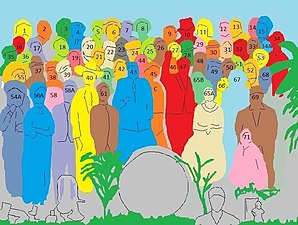
Sgt. Pepper's Lonely Hearts Club Band is the eighth studio album by the English rock band the Beatles. Released on 26 May 1967, Sgt. Pepper is regarded by musicologists as an early concept album that advanced the roles of sound composition, extended form, psychedelic imagery, record sleeves, and the producer in popular music. The album had an immediate cross-generational impact and was associated with numerous touchstones of the era's youth culture, such as fashion, drugs, mysticism, and a sense of optimism and empowerment. Critics lauded the album for its innovations in songwriting, production and graphic design, for bridging a cultural divide between popular music and high art, and for reflecting the interests of contemporary youth and the counterculture.
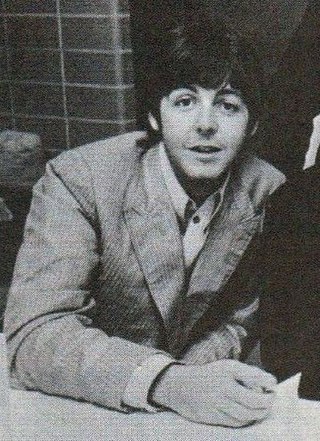
"Paul is dead" is an urban legend and conspiracy theory alleging that English musician Paul McCartney of the Beatles died in 1966 and was secretly replaced by a look-alike. The rumour began circulating in 1966, gaining broad popularity in September 1969 following reports on American college campuses.

Geoffrey Ernest Emerick was an English sound engineer and record producer who worked with the Beatles on their albums Revolver (1966), Sgt. Pepper's Lonely Hearts Club Band (1967) and Abbey Road (1969). Beatles producer George Martin credited him with bringing "a new kind of mind to the recordings, always suggesting sonic ideas, different kinds of reverb, what we could do with the voices".

"Lucy in the Sky with Diamonds" is a song by the English rock band the Beatles from their 1967 album Sgt. Pepper's Lonely Hearts Club Band. It was written primarily by John Lennon with assistance from Paul McCartney, and credited to the Lennon–McCartney songwriting partnership. Lennon's son Julian inspired the song with a nursery school drawing that he called "Lucy – in the sky with diamonds". Shortly before the album's release, speculation arose that the first letter of each of the nouns in the title intentionally spelled "LSD", the initialism commonly used for the hallucinogenic drug lysergic acid diethylamide. Lennon repeatedly denied that he had intended it as a drug song, and attributed the song's fantastical imagery to his reading of Lewis Carroll's Alice in Wonderland books.

"Being for the Benefit of Mr. Kite!" is a song recorded by the English rock band the Beatles for their 1967 album Sgt. Pepper's Lonely Hearts Club Band. It was written and composed primarily by John Lennon and credited to Lennon–McCartney.
"With a Little Help from My Friends" is a song recorded by English rock band the Beatles for their 1967 album Sgt. Pepper's Lonely Hearts Club Band. It was written primarily by Paul McCartney with contributions from John Lennon, and is sung by drummer Ringo Starr, his lead vocal for the album. As the second track on the album, it segues from the applause on the title track.
The 10th Annual Grammy Awards were held on February 29, 1968, at Chicago, Los Angeles, Nashville and New York. They recognized accomplishments of musicians for the year 1967.

"When I'm Sixty-Four" is a song by the English rock band The Beatles, written by Paul McCartney and released on their 1967 album Sgt. Pepper's Lonely Hearts Club Band. It was one of the first songs McCartney wrote; he was about 14, probably in April or May 1956. The song was recorded in a key different from the final recording; it was sped up at the request of McCartney to make his voice sound younger. It prominently features a trio of clarinets throughout.
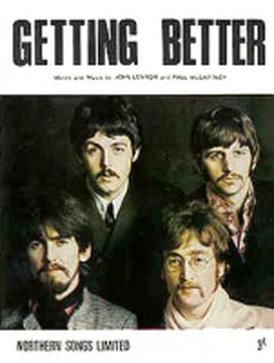
"Getting Better" is a song by the English rock band the Beatles from their 1967 album Sgt. Pepper's Lonely Hearts Club Band. It was written mainly by Paul McCartney, with some of the lyrics written by John Lennon, and credited to the Lennon–McCartney partnership.

Imagine: John Lennon is a soundtrack album of popular music compiled for the 1988 documentary film Imagine: John Lennon from songs written or co-written by John Lennon. Originally released that year as a double album, it now remains available on one CD.
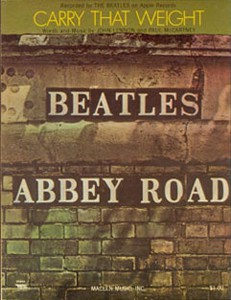
"Carry That Weight" is a song by the English rock band the Beatles from their 1969 album Abbey Road. Written by Paul McCartney and credited to Lennon–McCartney, it is the seventh and penultimate song in the album's climactic side-two medley. It features unison vocals in the chorus from all four Beatles, a rarity in their songs. It is preceded by "Golden Slumbers" and segues into "The End".

"Sgt. Pepper's Lonely Hearts Club Band" is a song written by Paul McCartney, credited to Lennon–McCartney, released in 1967 on the album of the same name by the Beatles. The song appears twice on the album: as the opening track, and as "Sgt. Pepper's Lonely Hearts Club Band (Reprise)", the penultimate track. As the title song, the lyrics introduce the fictional band that performs on the album.

"She's Leaving Home" is a song by the English rock band the Beatles, written by Paul McCartney and John Lennon, and released on their 1967 album Sgt. Pepper's Lonely Hearts Club Band. Paul McCartney wrote and sang the verse and John Lennon wrote the chorus, which they sang together. Neither George Harrison nor Ringo Starr were involved in the recording. The song's instrumental background was performed entirely by a small string orchestra arranged by Mike Leander, and is one of only a handful of Beatles recordings in which none of the members played a musical instrument.

"Lovely Rita" is a song by the English rock band the Beatles from their 1967 album Sgt. Pepper's Lonely Hearts Club Band. It was written mainly by Paul McCartney and credited to Lennon–McCartney. It is about a meter maid and the narrator's affection for her.

"Good Morning Good Morning" is a song by the English rock band the Beatles from their 1967 album Sgt. Pepper's Lonely Hearts Club Band. It was written by John Lennon and credited to Lennon–McCartney. Inspiration for the song came to Lennon from a television commercial for Kellogg's Corn Flakes. Another reference to contemporary television was the lyric "It's time for tea and Meet the Wife", referring to the BBC sitcom.
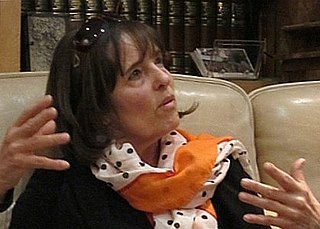
Jann Haworth is a British-American pop artist. A pioneer of soft sculpture, she is best known as the co-creator of The Beatles' 1967 Sgt. Pepper's Lonely Hearts Club Band album cover. Haworth is also an advocate for feminist rights especially for the representation of women in the art world.

Sgt. Pepper's Lonely Hearts Club Band on the Road was a 1974 off-Broadway production directed by Tom O'Horgan. It opened at the Beacon Theatre in New York on November 17, 1974 and ran for a total of 66 performances.
This is a summary of 1967 in music in the United Kingdom.

The McCartney Interview is a limited edition vinyl release, published in 1980 on the Parlophone label in the UK and Europe and the following year on Columbia Records in North America. The album contains an interview of Paul McCartney by journalist Vic Garbarini, recorded for the magazine Musician in May 1980. The cover photography was taken by Linda McCartney.
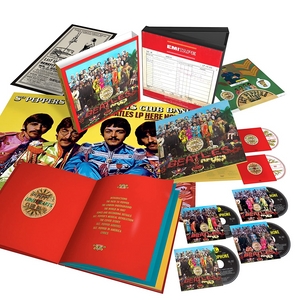
Sgt. Pepper's Lonely Hearts Club Band: 50th Anniversary Edition is an expanded reissue of the 1967 album Sgt. Pepper's Lonely Hearts Club Band by the English rock band the Beatles. It was released on 26 May 2017, the album's 50th anniversary. It includes a new stereo remix of the album by Giles Martin, the son of Beatles producer George Martin.


